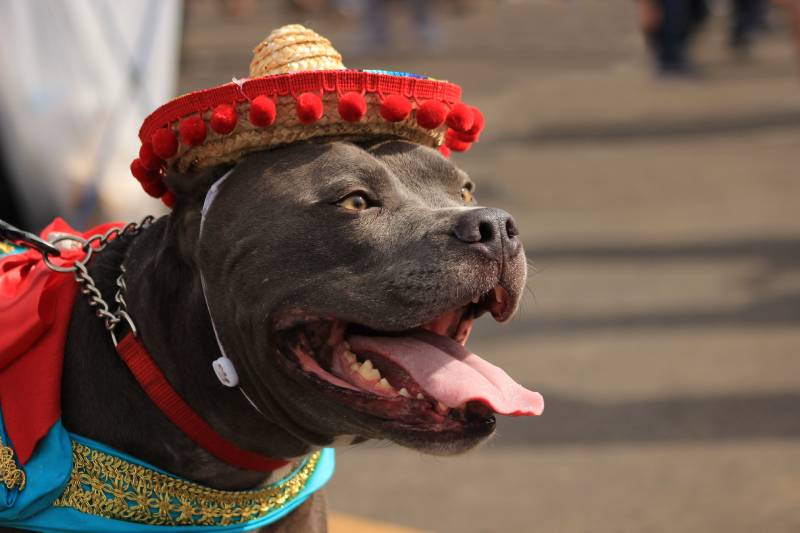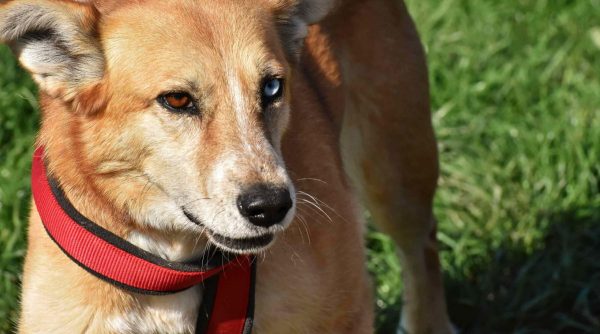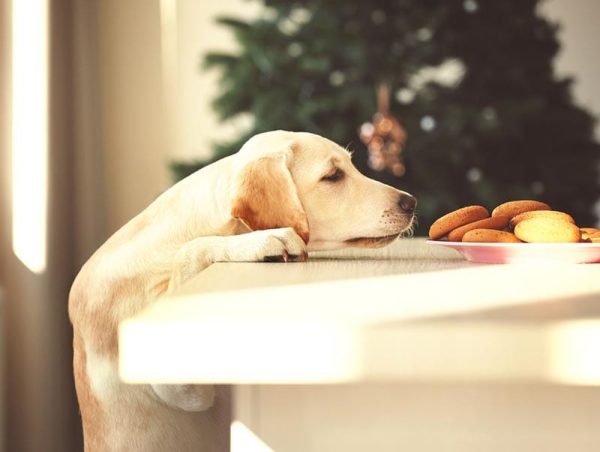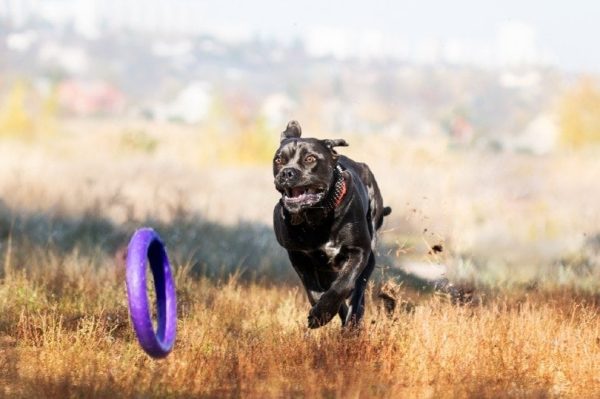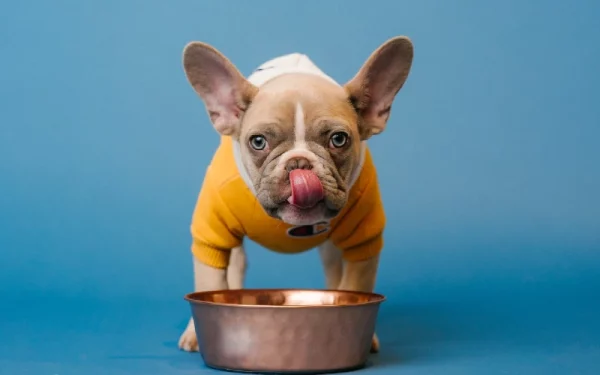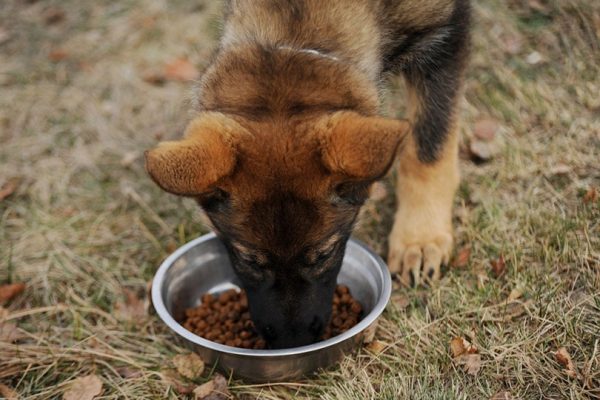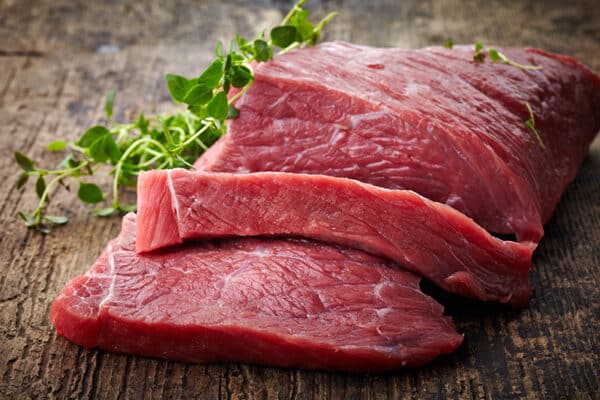In this article
View 8 More +Owning a Mexican Pitbull, also known as a Chamuco, can be an exciting experience for those who are up for the challenge. These dogs are known for their loyalty, intelligence, and protective nature. However, they are also strong-willed and require a firm hand when it comes to training and discipline. It’s important to socialize your Mexican Pitbull from a young age to ensure they do not become too aggressive toward strange people or other dogs (and animals in general). Let’s take a closer look at this breed.
Breed Overview
Height:
18–21 inches
Weight:
25–40 pounds
Lifespan:
8–15 years
Colors:
White, brown, black, gray, tri-colors
Suitable for:
Active, responsible owners who are willing to train these dogs
Temperament:
Loyal, intelligent, friendly, and active; natural protective instincts; can be friendly when socialized as pups
Although this breed is not recognized by the American Kennel Club or other dog breed organizations, the Mexican Pitbull was developed by crossbreeding American Pitbull Terriers, American Staffordshire Terriers, and several other breeds including the now-extinct Mexican Bulldog.
Despite their powerful build, Mexican Pitbulls are not aggressive dogs by nature. They are friendly and affectionate toward their owners and are known for their loyalty and obedience. They have a playful and curious nature and enjoy spending time with their family. Mexican Pitbulls are also social and enjoy the company of other dogs.
Mexican Pitbull Characteristics

Mexican Pitbull Puppies
If you’re in search of a Mexican Pitbull puppy, there are a few places you can look. First, start by checking out local animal shelters and rescue organizations. These often have a variety of breeds, including Pitbulls, and may have a Mexican Pitbull puppy available. Second, you can search online for breeders in Mexico who specialize in Pitbulls.
When it comes to the cost of a Mexican Pitbull puppy, it can vary widely depending on the breeder and the specific dog. Typically, they fall on the higher end of the price range due to the breed’s rarity.
Temperament & Intelligence of the Mexican Pitbull
Are These Dogs Good for Families?
Mexican Pitbulls have a reputation for being aggressive and dangerous, but this is a misconception. The truth is that Mexican Pitbulls are friendly and affectionate dogs that are great with children and make excellent family pets. They are also highly intelligent and respond well to training, making them ideal for obedience competitions.
It’s important to start training and socializing your Mexican Pitbull from a young age to ensure that they grow up to be well-behaved and obedient dogs. Mexican Pitbulls can be protective of their family, which can make them wary of strangers. Proper socialization can help them learn to trust and be friendly toward new people.
Does This Breed Get Along With Other Pets?
Mexican Pitbulls are social dogs that enjoy the company of other dogs. However, like all dogs, they require proper socialization to ensure that they get along with other pets. Mexican Pitbulls have a strong prey drive, which means they may be tempted to chase small animals.
So, if you do purchase one of these puppies, be sure to introduce Mexican Pitbulls to other pets slowly and under supervision. They should be taught to interact with other pets in a calm and controlled manner. Mexican Pitbulls that have been properly socialized can get along well with other dogs and even cats.

Things to Know When Owning a Mexican Pitbull
Food & Diet Requirements
In order to comply with the Association of American Feed Control Officials standards for dog nutrition, you must provide your Pitbull with high-grade canine food made with actual, natural sources of essential nutrients. Meat or poultry (a.k.a. protein) should be the main ingredient, with more fat than usual and reduced carbohydrate levels to prevent obesity. Your Pit should get 2 grams of protein per pound of body weight every day to stay healthy.
When considering a diet for your Pitbull, it may be beneficial to chat with your vet about grain-free dog food or other types of food based on individual ingredients. Additionally, fatty acids in the diet can help address any skin problems.
Some Pitbulls may experience a type of cardiac disorder referred to as aortic stenosis. To maintain the health of your dog’s heart, a nourishing diet is essential, along with proper check-ups and medicines prescribed by a vet.
Exercise
One of the most striking features of Mexican Pitbulls is their muscular build. They have a well-defined, powerful physique that is both impressive and intimidating. Their bodies are lean and agile, making them excellent athletes. They are also known for their high energy levels and require regular exercise to stay healthy and happy. Mexican Pitbulls aren’t really recommended for apartment living, as they need plenty of space to run and play.
Without enough exercise, they can become bored and destructive. Mexican Pitbulls are also highly social dogs and enjoy spending time with their family. They can become anxious and stressed if left alone for long periods of time.
Training
Training a Mexican Pitbull while they are a puppy is essential for several reasons. First, it helps establish a strong bond between the owner and the dog. Second, it helps in shaping the dog’s behavior and personality. Puppies are like sponges, and they absorb everything in their environment, including learned behaviors.
Therefore, it’s the perfect time to teach them what’s acceptable and what’s not. Training Mexican Pitbulls while they’re puppies also helps in preventing destructive behaviors such as chewing, digging, and excessive barking. Here are a few ways to train these young tough pups:
- Basic Obedience Training – The first step in training your Mexican Pitbull puppy is basic obedience training. This will teach your puppy the essential commands, such as sit, stay, come, and heel. These will create a foundation for more advanced training in the future. When training your puppy, avoid using punishment or negative reinforcement, as this can create fear and aggression. Consistency and repetition are key when training your Mexican Pitbull, so be patient and keep practicing until your puppy has mastered each command.
- Crate Training – Crate training is an essential part of Pitbull puppy training. A crate provides a safe and secure space for your puppy to rest and sleep, as well as a way to prevent destructive behavior when you’re not home. When crate training your puppy, make the crate a positive and comfortable space, using treats, toys, and blankets to create a cozy environment. Never use the crate as a punishment for unwelcome behavior because it can lead to anxiousness in your pup. Gradually increase the amount of time your puppy spends in the crate, starting with short periods and working your way up to longer periods.
- Socialization Training – Socialization training is critical for Pitbull puppies, as it will help them become well-adjusted and confident around other dogs and humans. Start socializing your puppy from a young age by exposing them to different environments, people, and animals (especially dogs). Use positive reinforcement approaches, such as treats and praise, to encourage good behavior. It’s also essential to supervise your puppy during socialization, to ensure their safety and prevent any negative interactions.
- Leash Training – Leash training is a vital part of puppy training for Pits, as it will teach your puppy to walk calmly and obediently on a leash. Start leash training your puppy by introducing them to the collar and leash gradually, using positive reinforcement techniques to reward good behavior. Practice walking your puppy on the leash in a quiet and familiar environment, gradually increasing the distance and distractions.
- Advanced Training Techniques – Once your Pitbull puppy has mastered basic obedience commands, you can move on to more advanced training techniques, such as agility training, trick training, and scent training. These techniques will provide mental and physical stimulation for your puppy, as well as challenge their intelligence and problem-solving skills. Use positive reward systems, such as treats, reassurance, and verbal praise, to encourage positive behavior during advanced training.
Grooming ✂️
As with any breed, grooming your Mexican Pitbull not only helps them look and feel their best, but it also has health benefits. Regular grooming can help prevent skin irritations and infections, as well as mats and tangles in their fur. It also enables you to inspect your dog’s skin and coat for any abnormalities or signs of parasites. Here are some tips to groom your Mexican Pitbull the right way.
- Bathing – Mexican Pitbulls have short fur, so they don’t need to be bathed as often as some other breeds. However, it’s still important to keep them clean and fresh. It’s recommended to bathe your Mexican Pitbull every 4–6 weeks or as needed if they get particularly dirty. When bathing your Mexican Pitbull, make sure to use a canine shampoo and any anti-flea medication needed. Human shampoo can be too harsh for their skin and cause irritation. Use lukewarm water, and avoid getting water and soap in their eyes, nose, and ears. Dry them off with a towel or blow dryer on a low heat setting.
- Brushing – Brushing your Mexican Pitbull’s fur is essential for maintaining a healthy coat and preventing mats and tangles. It’s recommended to brush your dog at least once a week. Use a brush specifically designed for short-haired breeds, such as a rubber curry brush or a bristle brush. Start at their head, and work your way down their body, being gentle around sensitive areas like their belly and legs.
- Nail Trimming – Regular nail trimming is important for your Mexican Pitbull’s health and comfort. Overgrown nails can cause pain and difficulty walking. It’s recommended to trim your dog’s nails every 4–6 weeks or as needed if you hear them clicking on hard surfaces.Use a dog-specific nail clipper, and trim the tip of their nail, being careful not to cut the quick (the pink part of the nail that contains blood vessels).
Grooming Tools and Products for Mexican Pitbulls
Having the right grooming tools and products can make a big difference in the quality of your Mexican Pitbull’s grooming experience.
- Dog-specific shampoo and conditioner
- Rubber curry brush or bristle brush
- Nail clipper
- Styptic powder (to stop bleeding if you accidentally cut the quick)
- Ear cleaner
- Toothbrush and toothpaste (specifically designed for dogs)
It’s also a good idea to have a grooming table or designated grooming area where you can easily access all your tools and products.
How Often Should You Groom Your Mexican Pitbull?
The frequency of grooming your Mexican Pitbull depends on their individual needs. Bathing should be done every 4–6 weeks, brushing at least once a week, and nail trimming every 4–6 weeks.
You may need to groom your Mexican Pitbull more frequently if they have a skin condition or are prone to matting. However, if your Pit spends most of their time indoors and doesn’t get dirty often, you may be able to stretch out the time between baths.
Health and Conditions
- Skin allergies
- Ear infections
- Dental issues
- Thyroid disease
- Ichthyosis
- Bloat
- Cataracts
Minor Conditions
- Skin Allergies – Skin allergies and other issues will often develop from parasites, improper grooming, poor hygiene, or other health issues. Allergies can cause itching, redness, and rashes, which can typically be treated with medicated shampoos, antihistamines, and steroids. If you notice your dog excessively licking, scratching, or biting on a certain area, it could be a sign of an allergy or infection, in which case, it’s best to do a bit of investigating and call your vet for a consultation.
- Ear Infections – These can cause discomfort and pain, and if left untreated, can lead to hearing loss. Regular cleaning and inspection of the ears can help prevent infections, and antibiotics can be prescribed by a veterinarian if necessary.
- Dental Issues – Dental issues like gum disease, tartar buildup, and tooth decay can be prevented by regular brushing and dental checkups. If left untreated, these issues can lead to tooth loss, pain, and infection. It is important to keep a close eye on your Pitbull’s health and consult with a veterinarian if you notice any changes in their behavior, appetite, or overall well-being. Regular exercise, a balanced diet, and proper grooming can help keep your Pitbull healthy and happy.
Serious Conditions
- Thyroid Disease – Thyroid disease is an ailment that affects the functioning of this endocrine organ. All Pitbulls have a high chance of developing a thyroid issue such as hypothyroidism. This can lead to excess weight and skin troubles due to the thyroid glands not making enough hormones. Behavioral changes, such as fearful aggression, can result from thyroid disease in addition to the physical signs. The vet will run blood tests to determine if your Pitbull has thyroid disease. They might require regular intake of thyroxine to manage the condition.
- Ichthyosis – Ichthyosis is a skin condition that involves an excessive buildup of skin, most often described as dry and scaly. Overall, it’s a disorder that is present at birth and can be a painful problem for Pitbulls. Signs of this condition include thickened skin and a hardened layer on the paw pads. This peculiar skin condition exhibits indications resembling those of fish scales or dandruff in humans. If not dealt with, the scales will become more intense with the Pitbull’s increasing age.
- Bloat – These Pits may also develop bloat, or gastric dilatation volvulus. This is a condition where the stomach becomes distorted due to an accumulation of gas or fluid. This can lead to a dangerous twisting of the stomach. Unfortunately, some Pitbull owners may downplay the seriousness of this medical issue, but it can be deadly within a few hours. When a dog with this disorder eats, they may end up having too much gas in their stomach. Also, consuming fermented food and “air eating” can make the condition even worse. So, if your pup has a swollen abdomen and appears to be nervous, you should take them to the vet straight away. The physician can look into techniques to release the air.
- Cataracts – Mexican Pitbulls are susceptible to cataracts. A cataract is an eye disorder that results in the clouding of the lens of the eye. It’s typically age-related and can interfere with vision. This breed is more likely to develop cataracts than many other breeds. The cause of this can be either genetic or arise from other ailments like hypocalcemia, diabetes, and uveitis. If caught early, pharmaceutical treatments can be used to reduce the cataracts, but surgery may be necessary if the condition has progressed. Puppies of this breed are more prone to juvenile cataracts, which usually appear before 6 years of age.
Male vs. Female
By just looking at them, you typically won’t be able to tell the difference between a male and female Mexican Pitbull, unless you look at their nether regions. But there are certain differences between male and female Pitbulls that should be taken into consideration when deciding which sex to adopt. One of the most noticeable differences is size. Male Pitbulls tend to be larger and more muscular, while females are generally smaller and leaner.
Additionally, male Pitbulls may be more dominant and territorial, while females may be more affectionate and nurturing toward their owners and family members. But note that these traits can vary greatly depending on the individual dog and their upbringing, so it’s not a hard-and-fast rule.
3 Little-Known Facts About the Mexican Pitbull
1. They Have Numerous Names
Mexican Pitbulls are also known as Chamucos and are sometimes called Mexican Staffordshire Terriers.
2. They Were Used in Dogfighting
The breed was developed in Mexico in the 1980s for illegal dog-fighting rings.
3. They Are Incredibly Talented
Mexican Pitbulls are highly trainable and can be taught to perform a variety of tasks, including assisting people with disabilities and working as search-and-rescue dogs.
Mexican Pitbulls in Pop Culture
Mexican Pitbulls have gained popularity in recent years, appearing in movies, TV shows, and even music videos. One of the most famous Mexican Pitbulls is Hulk, a dog that gained fame for his massive size and muscular build. Hulk has appeared in several TV shows and has a large following on social media.
Mexican Pitbulls have also been featured in movies like “The Sandlot” and “Little Giants.” They have also appeared in music videos for artists like Snoop Dogg and Pitbull. Mexican Pitbulls are often portrayed as tough and fearless, but in reality, they are friendly and affectionate dogs that make great family pets.

Conclusion
If you’re considering getting a Mexican Pitbull, remember that they require regular daily exercise and playtime to keep them happy and from running wild around your home. They’re also highly social dogs and require plenty of attention and affection from their owners. With proper care and training, Mexican Pitbulls can make great companions and loyal family pets. It’s important to start training these dogs while they are still young puppies to prevent them from becoming stubborn adults that are difficult to control.
Featured Image Credit: Simone Hogan, Shutterstock
